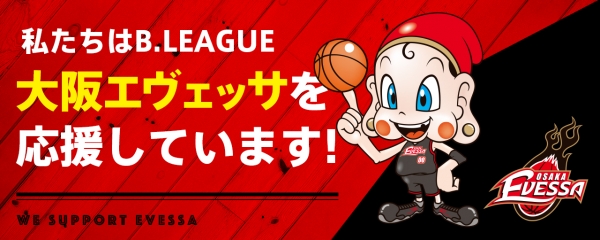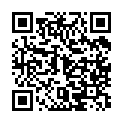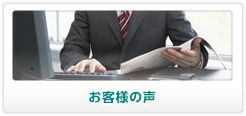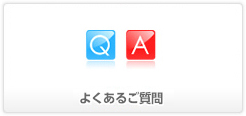STRESS(the basics of stress)
|
When designing springs, we often talk about stress-strain diagrams and the tensile strength of materials. There are many terms that I don't understand at all, such as yield point, yield strength, longitudinal elastic modulus, transverse elastic modulus, and Poisson's ratio.
These are the things you need when designing a spring, and I will explain step by step how they are needed.
This time it's "the basics of stress".
1. What is stress?
Stress is simply "force divided by cross-sectional area".
"Force" when calculating stress means "internal force generated inside an object". not an external force. If you make a mistake here, you will not know the stress until the end.
The Wikipedia definition states that ``stress is a physical quantity used to express the magnitude and direction of force generated inside an object''.
The first important point in understanding stress is to know the "internal force".
Now, let's actually solve the problem and consider the stress. This is the first question asked when learning about stress.
Problem 1
There is a round bar with a cross section of 50. One is fixed to the wall. What would be the stress if the other was pulled with a force of 500 (units omitted for simplicity)?
The answer is 500÷50=10 The stress is 10. This is easy, isn't it? Now for the second question.
Problem 2
There is a round bar with a cross section of 50. What is the stress if each end of the bar is pulled with a force of 500?
The external force pulling at both ends is 500+500=1000. Since the internal force is 1000, 1000÷50=20 The answer is stress 20. You might think that, but this is not the correct answer. The percentage of correct answers to this question is very low.
The answer is the same as question 1. Divide 500 by 50 to get a stress of 10.
In fact, in Problem 1, a force of 500 is acting on the wall in the opposite direction, so the wall is balanced and stationary. Although they look different, problems 1 and 2 are mechanically the same.
2. Internal and external forces
What kind of power is internal force? How is it different from an external force? It is surprisingly not easy to explain the difference between internal and external forces.
As an example, consider a situation in which Mr. A and Mr. B are pushing each other and standing still.
First, let's focus on "only" Mr. A. As in the previous problem example, the dynamic state is the same whether Mr. B is a person or a wall. Mr. A presses. Then, Mr. A feels the same force as the pushing force from the outside. Action and reaction are in balance. Both the pushing force and the repelling force are external forces. The same thing can be said if you focus on Mr. B “only”.
Where is the inner force?
Next, let's focus on "both" of Mr. A and Mr. B. At the point of contact where two people are pushing each other, action and reaction forces are acting in pairs. This force is the “inner force”. The internal force is the force acting between the "two" objects of interest.
If the point of attention is different, even the same force in the same direction will be an external force. It is important to pay attention to the action or reaction between any two substances. The internal force considers action and reaction as a pair by focusing on "two" objects. This is the next point in understanding stress.
Then, which two substances should we pay attention to in the first problem of the round bar? There is only one round bar.
There is a third point here. It is to "focus on the cross section". It looks like a single object, but it is assumed that there are two objects on the border of the cross section. There is only one round bar, but it is assumed that the reference cross section for stress calculation is the contact point of two materials.
This is the trickiest part of understanding stress. Even if it looks like one object, you can see the internal force and calculate the stress by assuming that it is two objects.
The three points to understand the definition that "stress is the force divided by the cross-sectional area" are as follows.
① Power means internal force.
② The internal force is a pair of action and reaction between two substances.
③Even if it is one substance, think about it assuming that two substances are in contact with each other at the cross section.
3. Review of Newton's Laws
Here, let's confirm "balanced state" and "action/reaction" as major premises for understanding stress. This is the great law of physics discovered by Isaac Newton (1642-1727).
Newton's law
First law:Law of Inertia
Second Law:Law of Motion
Third Law:Law of Action and Reaction
Mechanics of materials is statics. Schools tend to lean too heavily toward dynamics, and tend to underestimate the first and third laws, which are important for statics. Some people may have forgotten, so I will explain the 1st and 3rd laws in the area of stress.
First Law:Law of Inertia
In equilibrium, matter is at rest (or in uniform linear motion). Equilibrium means that:
1. no force
2. A state in which the resultant force of the acting forces is zero (such as when the same force in the opposite direction is acting)
Strictly speaking, there is no force acting on matter at all (gravity always acts on the earth), so in reality the resultant force of various forces is zero and the matter is at rest. Even at rest, force is always at work.
Knowing the force that is acting even at rest is to know the stress. Stress is essential for strength calculations in material mechanics and structural mechanics.
Third Law:Law of Action and Reaction
The law of action and reaction states that the same force acts in opposite directions on the same line between two bodies. Forces cannot exist alone, they always exist in pairs.
It can be said that stress assumes the cross section of a certain substance, regards one substance as if there were two substances, and considers the relationship between the internal forces (action and reaction).
4.History and present of stress research
The concept of stress was first established by mathematician Augustin Cauchy (1789-1857). He was the first to introduce the concept of pressure on a cross-section of matter into the theory of elasticity. Stress was considered mathematically rather than experimentally (mathematical elastic theory).
It is not true that the strength of machines and buildings can be calculated if the stress is known. After the industrial revolution , various phenomena were discovered in which even if structures were constructed based on data obtained in laboratories by calculating stress, they would fail at a lower strength than the calculated stress.
For example, fatigue fracture phenomena, creep phenomena, hydrogen embrittlement, strength embrittlement of welds, etc.
In order to cope with these fracture phenomena and stress reduction phenomena, various stress coefficients have been considered up to now, and stress calculations have been refined.
However, today, in addition to mathematical theory and structural experiments, materials strength studies that study stress and fracture phenomena from a slightly wider perspective are developing. In material strength studies, stress and fracture phenomena are studied comprehensively and systematically, including the locations where structures are actually used, production quantities, manufacturing processes, and industrial culture.
Next time, we will talk about types of stress. What are compressive stress, tensile stress, torsional stress, shear stress, and so on, which are necessary for spring calculation?
(to be continued)
|
||
>YouTube channel [Comprehensive manufacturer of springs "Fusehatsu Industry"] Video is now available!
>New YouTube Channel [Fusehatsu Industry's Spring Making Channel] New manufacturing videos are being updated!
If you press the "Good" button, you will be able to check the latest information immediately.
■PR(Japanese Page)
>Sunday Mainichi "Company style" published.
>Sankei Shimbun full-page color advertisement
>Monthly PHP Business THE21 "Following the topical business people" published.
>It was published in "Premonition of a hit!"
>Published in the ISO information magazine "Intertek News".
> “Higashi-Osaka Industrial Photo Exhibition” at the former Kawazumi family of the Higashi-Osaka Shimbun Photo exhibition of factories and public baths, as well as anti-infection products
>Higashi-Osaka Shimbun corner of Fusehatsu Industry exhibiting photos of springs and machinery
>Kinzoku Sangyo Shimbun Fusehatsu Industry Developing new customers through SNS
Became an official sponsor of the professional basketball team "Osaka Evessa"!
>Blog "Spring and Kurasu" [Became an official sponsor of a professional basketball team]
 |
メールアドレスはこちら
![]()








